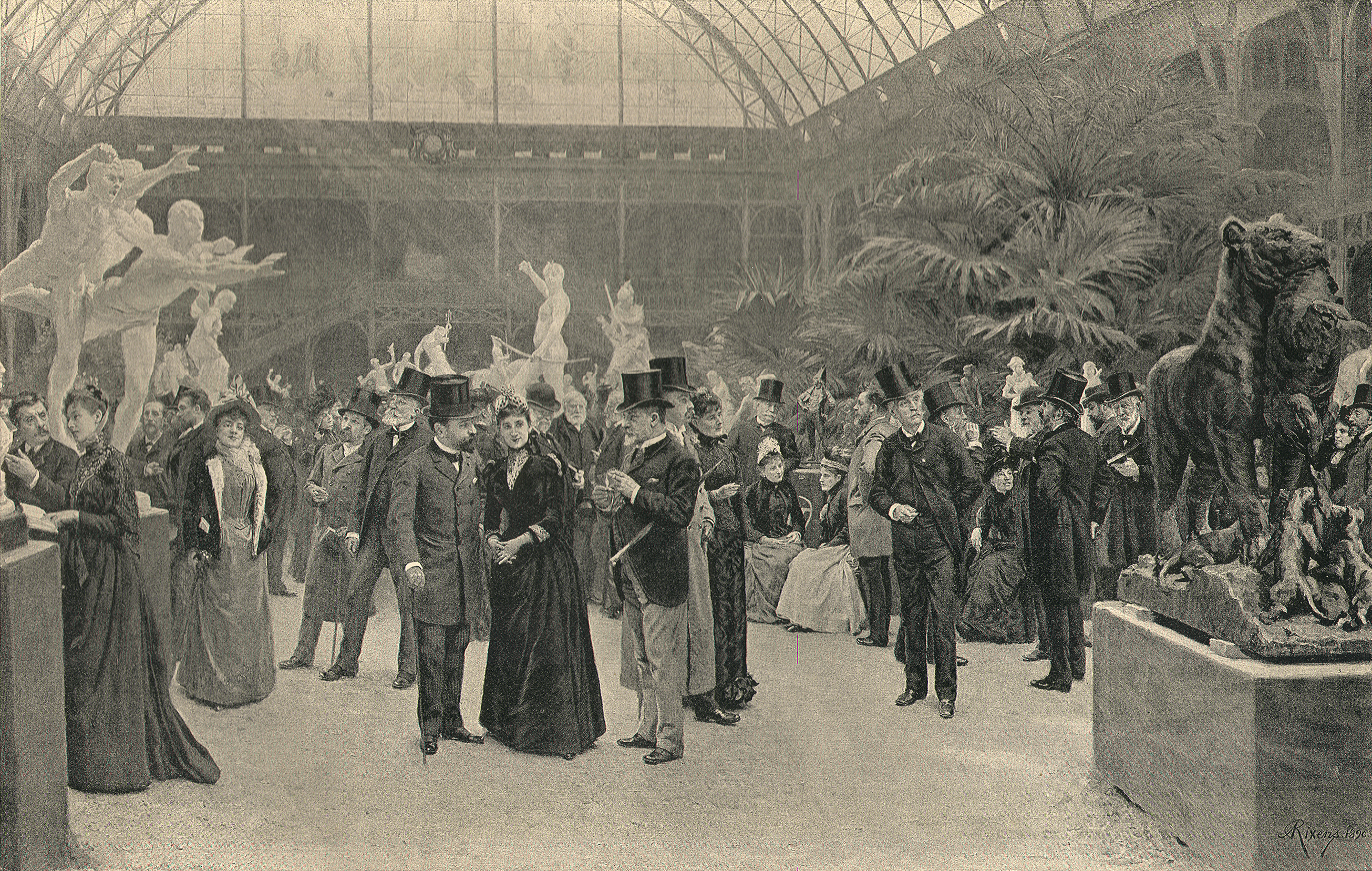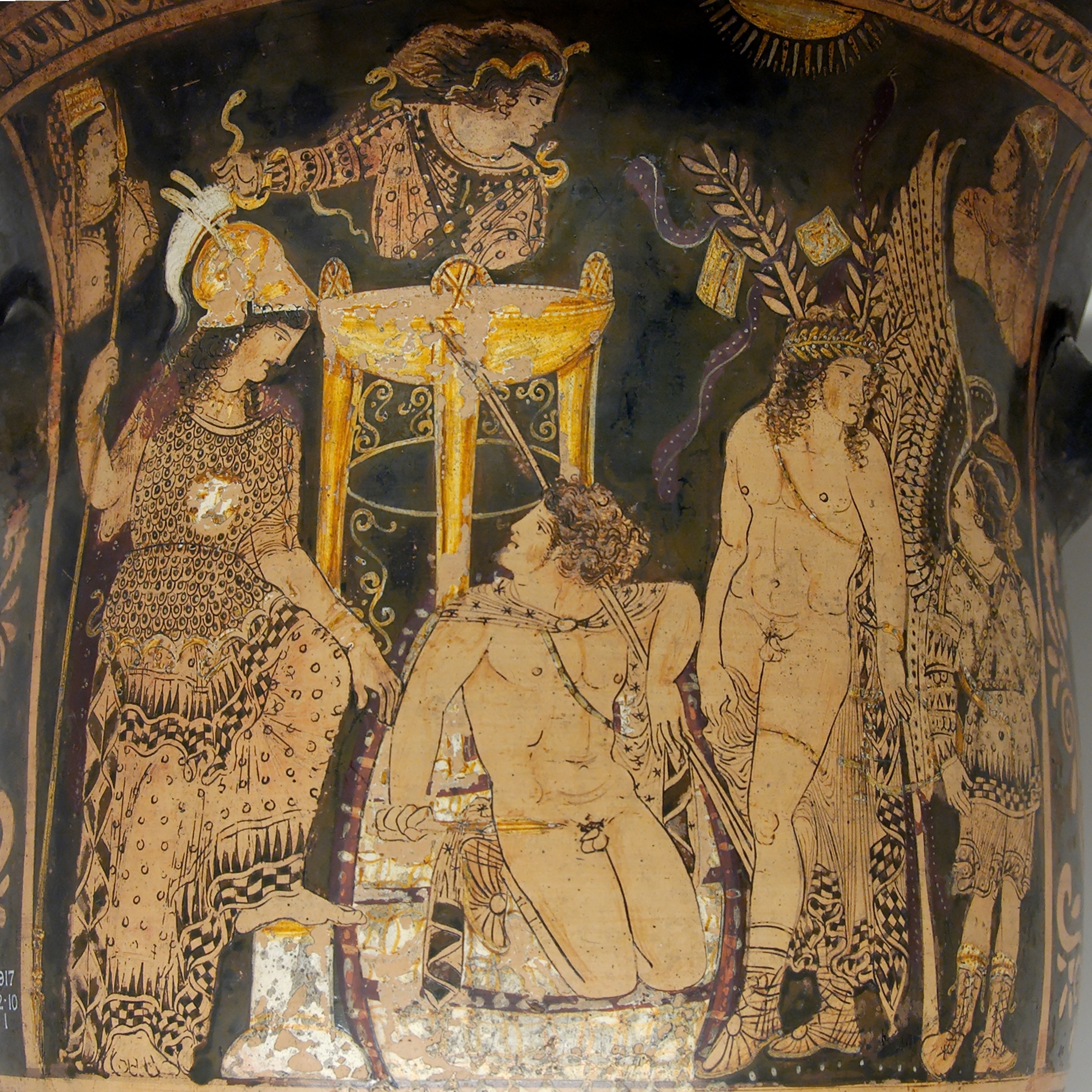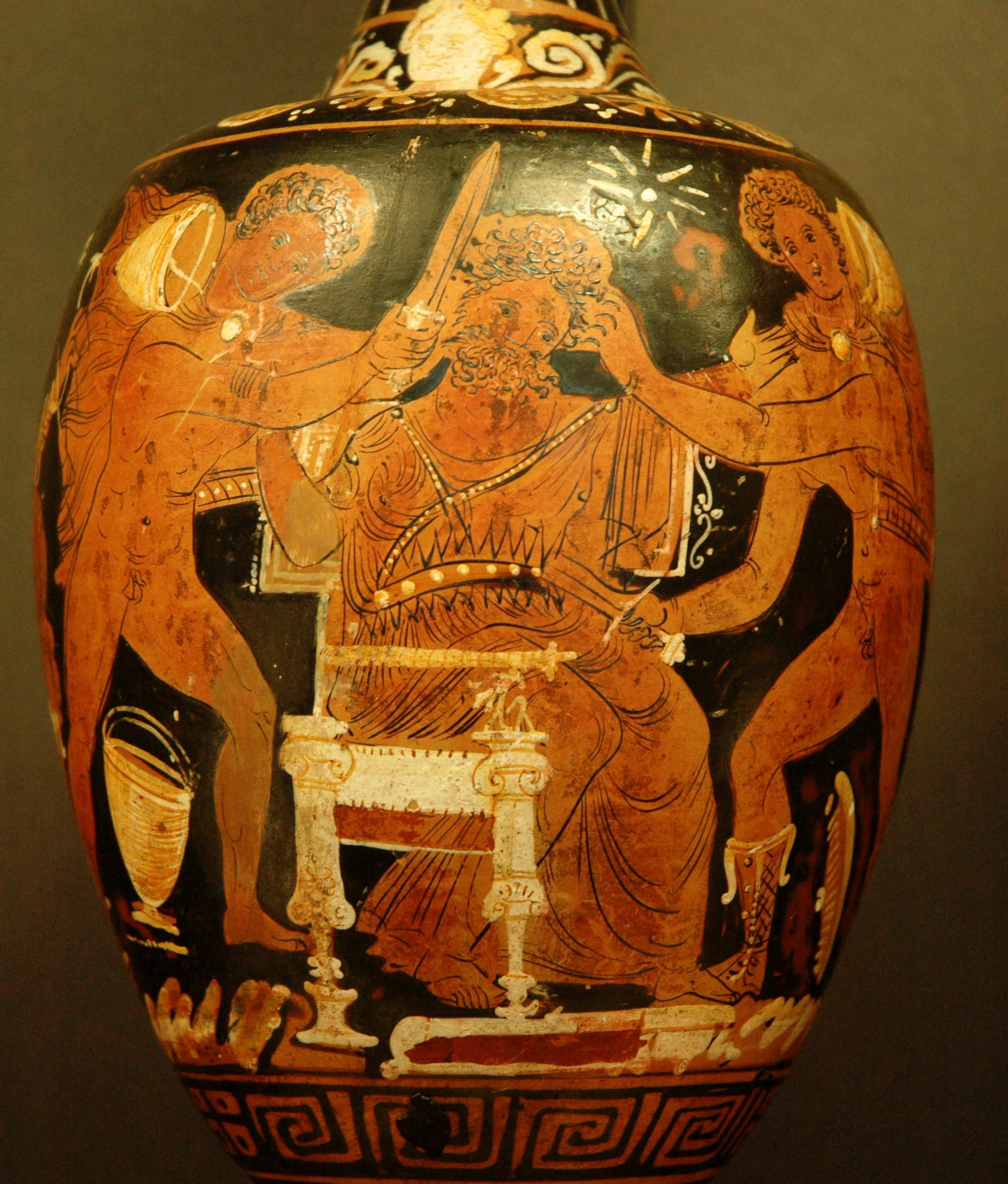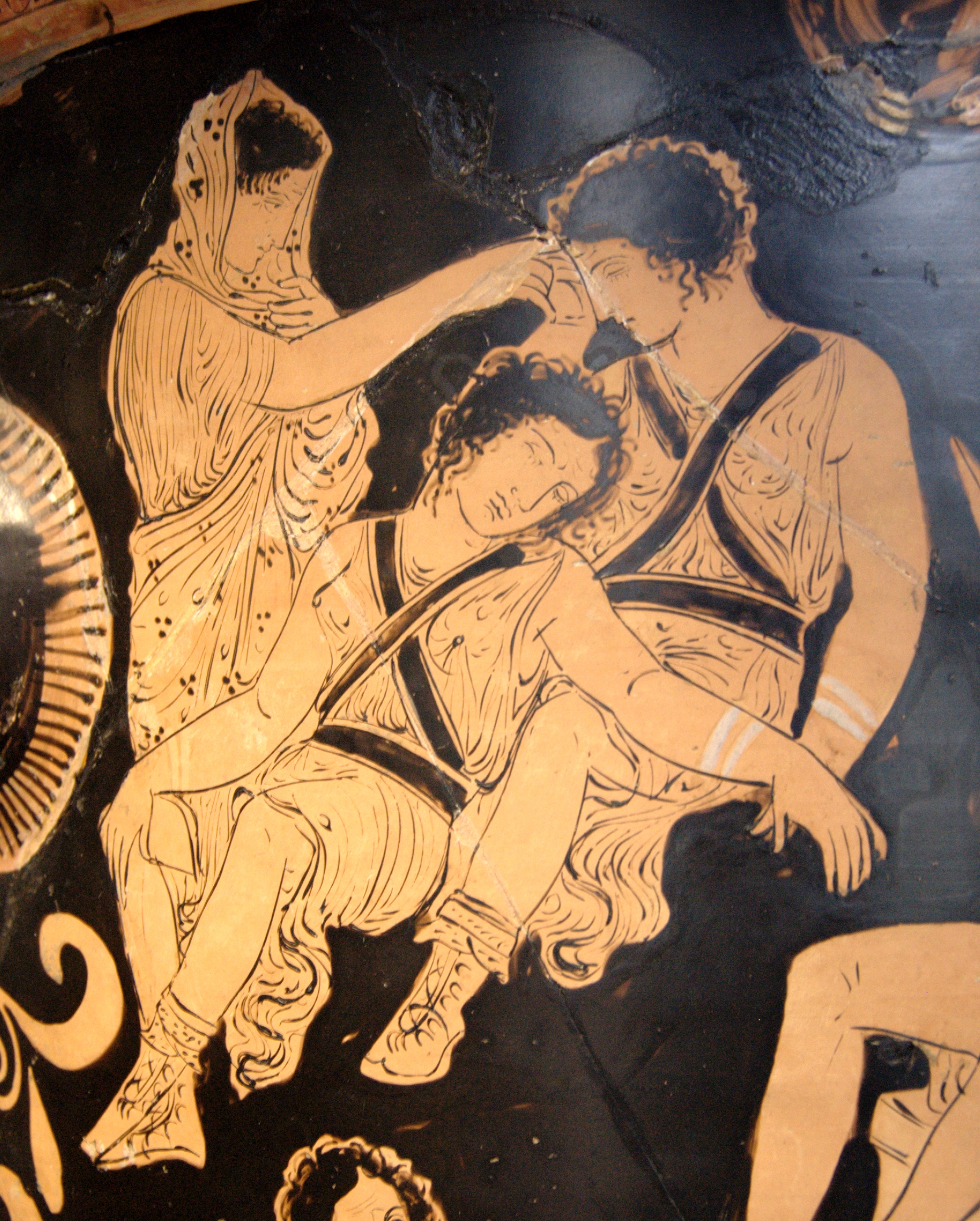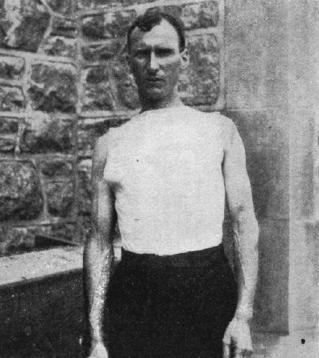|
Remorse (Baader Painting)
''Remorse'' ''(french: Le Remords)'' is an oil on canvas painting by Louis-Marie Baader. It is a very large canvas, 376 cm high and 295 cm wide. It was first exhibited at the Salon of 1875 and was purchased by the state from the artist. Subject The painting depicts an episode from Greek mythology. Orestes avenges the murder of his father Agamemnon by his mother Clytemnestra and her lover Aegisthus by killing them both. In the moment captured in the painting, Orestes looks down in horror at the bodies of the couple he has just murdered, while around him crowd the Erinyes. By painting both Orestes and Clytemnestra nude, Baader demonstrated his mastery of anatomy to the Academy and appealed to the public at the Salon, who were fond of sensual nudity. History When first purchased, the painting was displayed in the Museum of Fine Arts, Dole. It remained there until 1980, when it was assigned to the Louvre The Louvre ( ), or the Louvre Museum ( ), is the world's mo ... [...More Info...] [...Related Items...] OR: [Wikipedia] [Google] [Baidu] |
Louis-Marie Baader
Louis-Marie Baader (20 June 1828, Lannion - 2 December 1920, Morlaix) was a French painter of German descent. Life The son of a German musician (serving in comte Jacques Boudin de Tromelin's regiment) and his Norman wife, the count saw Louis-Marie's artistic potential early and with his support he entered the École des beaux-arts in Paris in 1848, in Adolphe Yvon's studio. Initially he gained several church and private commissions, but he only exhibited at the Paris Salon from 1857 to 1914. In 1866 he won a medal for ''Hero and Leander'' and a third class medal in 1874 for ''Posthumous Glory'', allowing him to sell several paintings to the French state. He worked for a long time as a history painter, but later moved into genre work, especially on Breton life, before ending his career painting military history paintings. He died unmarried and is buried in the cimetière Saint-Charles in Morlaix. See also *Remorse (Baader painting) ''Remorse'' ''(french: Le Remords)'' is an oil o ... [...More Info...] [...Related Items...] OR: [Wikipedia] [Google] [Baidu] |
Salon (Paris)
The Salon (french: Salon), or rarely Paris Salon (French: ''Salon de Paris'' ), beginning in 1667 was the official art exhibition of the Académie des Beaux-Arts in Paris. Between 1748 and 1890 it was arguably the greatest annual or biennial art event in the Western world. At the 1761 Salon, thirty-three painters, nine sculptors, and eleven engravers contributed. Levey, Michael. (1993) ''Painting and sculpture in France 1700–1789''. New Haven: Yale University Press, p. 3. From 1881 onward, it has been managed by the Société des Artistes Français. Origins In 1667, the royally sanctioned French institution of art patronage, the Académie royale de peinture et de sculpture (a division of the Académie des beaux-arts), held its first semi-public art exhibit at the Salon Carré. The Salon's original focus was the display of the work of recent graduates of the École des Beaux-Arts, which was created by Cardinal Mazarin, chief minister of France, in 1648. Exhibition at the ... [...More Info...] [...Related Items...] OR: [Wikipedia] [Google] [Baidu] |
Orestes
In Greek mythology, Orestes or Orestis (; grc-gre, Ὀρέστης ) was the son of Clytemnestra and Agamemnon, and the brother of Electra. He is the subject of several Ancient Greek plays and of various myths connected with his madness and purification, which retain obscure threads of much older ones. Etymology The Greek name Ὀρέστης, having become "Orestēs" in Latin and its descendants, is derived from Greek ὄρος (óros, “mountain”) and ἵστημι (hístēmi, “to stand”), and so can be thought to have the meaning "stands on a mountain". Greek literature Homer In the Homeric telling of the story, Orestes is a member of the doomed house of Atreus, which is descended from Tantalus and Niobe. He is absent from Mycenae when his father, Agamemnon, returns from the Trojan War with the Trojan princess Cassandra as his concubine, and thus not present for Agamemnon's murder by Aegisthus, the lover of his wife, Clytemnestra. Seven years later, Orestes retur ... [...More Info...] [...Related Items...] OR: [Wikipedia] [Google] [Baidu] |
Agamemnon
In Greek mythology, Agamemnon (; grc-gre, Ἀγαμέμνων ''Agamémnōn'') was a king of Mycenae who commanded the Greeks during the Trojan War. He was the son, or grandson, of King Atreus and Queen Aerope, the brother of Menelaus, the husband of Clytemnestra and the father of Iphigenia, Electra, Laodice (Greek myth), Laodike (Λαοδίκη), Orestes and Chrysothemis. Legends make him the king of Mycenae or Argos, Peloponnese, Argos, thought to be different names for the same area. Agamemnon was killed upon his Returns from Troy, return from Troy, either by his wife's lover Aegisthus or by his wife herself. Etymology His name in Greek, Ἀγαμέμνων, means "very steadfast", "unbowed" or "resolute". The word comes from Linguistic reconstruction, *Ἀγαμέδμων (''*Agamédmōn'') from ἄγαν, "very much" and wikt:μέδομαι, μέδομαι, "think on". Description In the account of Dares Phrygius, Dares the Phrygian, Agamemnon was described as ". . .bl ... [...More Info...] [...Related Items...] OR: [Wikipedia] [Google] [Baidu] |
Clytemnestra
Clytemnestra (; grc-gre, Κλυταιμνήστρα, ''Klytaimnḗstrā'', ), in Greek mythology, was the wife of Agamemnon, king of Mycenae, and the twin sister of Helen of Troy. In Aeschylus' '' Oresteia'', she murders Agamemnon – said by Euripides to be her second husband – and the Trojan princess Cassandra, whom Agamemnon had taken as a war prize following the sack of Troy; however, in Homer's '' Odyssey'', her role in Agamemnon's death is unclear and her character is significantly more subdued. Name Her Greek name ''Klytaimnḗstra'' is also sometimes Latinized as Clytaemnestra. It is commonly glossed as "famed for her suitors". However, this form is a later misreading motivated by an erroneous etymological connection to the verb ''mnáomai'' (, "woo, court"). The original name form is believed to have been ''Klytaimḗstra'' () without the ''-n-''. The present form of the name does not appear before the middle Byzantine period. Homeric poetry shows an awar ... [...More Info...] [...Related Items...] OR: [Wikipedia] [Google] [Baidu] |
Aegisthus
Aegisthus (; grc, Αἴγισθος; also transliterated as Aigisthos, ) was a figure in Greek mythology. Aegisthus is known from two primary sources: the first is Homer's ''Odyssey'', believed to have been first written down by Homer at the end of the 8th century BCE, and the second from Aeschylus's ''Oresteia'', written in the 5th century BCE. Aegisthus also features heavily in the action of Euripides's '' Electra'' ( 420 BCE), although his character remains offstage. Family Aegisthus was the son of Thyestes and Thyestes's own daughter Pelopia, an incestuous union motivated by his father's rivalry with the house of Atreus for the throne of Mycenae. Aegisthus murdered Atreus in order to restore his father to power, ruling jointly with him, only to be driven from power by Atreus's son Agamemnon. In another version, Aegisthus was the sole surviving son of Thyestes after Atreus killed his brother's children and served them to Thyestes in a meal. While Agamemnon laid siege to T ... [...More Info...] [...Related Items...] OR: [Wikipedia] [Google] [Baidu] |
Erinyes
The Erinyes ( ; sing. Erinys ; grc, Ἐρινύες, pl. of ), also known as the Furies, and the Eumenides, were female chthonic deities of vengeance in ancient Greek religion and mythology. A formulaic oath in the '' Iliad'' invokes them as "the Erinyes, that under earth take vengeance on men, whosoever hath sworn a false oath". Walter Burkert suggests that they are "an embodiment of the act of self-cursing contained in the oath". They correspond to the Dirae in Roman mythology. The Roman writer Maurus Servius Honoratus wrote (ca. 400 AD) that they are called "Eumenides" in hell, "Furiae" on Earth, and "Dirae" in heaven. Erinyes are akin to some other Greek deities, called Poenai. According to Hesiod's '' Theogony'', when the Titan Cronus castrated his father, Uranus, and threw his genitalia into the sea, the Erinyes (along with the Giants and the Meliae) emerged from the drops of blood which fell on the Earth (Gaia), while Aphrodite was born from the crests of se ... [...More Info...] [...Related Items...] OR: [Wikipedia] [Google] [Baidu] |
Museum Of Fine Arts, Dole
The museum of fine arts and archeology of Dole was founded in 1821. Since 1980, the museum is installed in the House of the Officers, an example of military architecture of Franche-Comté at the 18th century. Collections The collections comprise three sections: archeology, ancient art and contemporary art. Archeology: It is a matter of the archeological discoveries in the area of Jura, from the Neolithic to the Merovingian era. Ancient art: * Burgundian and of Franche-Comté sculptures from the Middle Age to the 18th century (G. Lullier, F.-M. Rosset, C.-F. Attiret), * French paintings 17th century and 18th century (S. Vouet, E. Allegrain, Ch.-A. Coypel), Italian Old Master Giambattista Pittoni, Italian ones (F. Albani, L. Giordano, G. Assereto) and Nordic ones (Maître de Saint-Gilles, P. van Boucle, C. Gysbrechts). * Paintings from the 19th century (J. B. Jongkind, G. Courbet), in particular from local artistes (J.-D. Attiret, A. Pointelin, J. Machard, G. Brun). * The H ... [...More Info...] [...Related Items...] OR: [Wikipedia] [Google] [Baidu] |
Louvre
The Louvre ( ), or the Louvre Museum ( ), is the world's most-visited museum, and an historic landmark in Paris, France. It is the home of some of the best-known works of art, including the ''Mona Lisa'' and the ''Venus de Milo''. A central landmark of the city, it is located on the Right Bank of the Seine in the city's 1st arrondissement (district or ward). At any given point in time, approximately 38,000 objects from prehistory to the 21st century are being exhibited over an area of 72,735 square meters (782,910 square feet). Attendance in 2021 was 2.8 million due to the COVID-19 pandemic, up five percent from 2020, but far below pre-COVID attendance. Nonetheless, the Louvre still topped the list of most-visited art museums in the world in 2021."The Art Newspaper", 30 March 2021. The museum is housed in the Louvre Palace, originally built in the late 12th to 13th century under Philip II. Remnants of the Medieval Louvre fortress are visible in the baseme ... [...More Info...] [...Related Items...] OR: [Wikipedia] [Google] [Baidu] |
Luc-Olivier Merson
Luc-Olivier Merson (21 May 1846 – 13 November 1920) was a French academic painter and illustrator also known for his postage stamp and currency designs. Biography Born Nicolas Luc-Olivier Merson in Paris, France, he grew up in an artistic household, the son of Charles-Olivier Merson, a painter and art critic. He studied under Gustave Chassevent at the École de Dessin and then Isidore Pils at the École des Beaux-Arts. Merson had his first work exhibited at the Paris Salon in 1866 and three years later was awarded the Prix de Rome. During the five years spent working in Italy, he concentrated on religious and historical subjects for his art. Back in France, in 1875 he won the first-prize medal at the exhibition by the Société des artistes français. ''Notre-Dame de Paris'', one of Merson's best-known paintings, was created in 1881 as a result of the huge popularity of the Victor Hugo novel of the same name. With its mystical Gothic imagery, its style reflects the in ... [...More Info...] [...Related Items...] OR: [Wikipedia] [Google] [Baidu] |
1875 Paintings
Events January–March * January 1 – The Midland Railway of England abolishes the Second Class passenger category, leaving First Class and Third Class. Other British railway companies follow Midland's lead during the rest of the year (Third Class is renamed Second Class in 1956). * January 5 – The Palais Garnier, one of the most famous opera houses in the world, is inaugurated in Paris. * January 12 – Guangxu becomes the 11th Qing Dynasty Emperor of China at the age of 3, in succession to his cousin. * January 14 – The newly proclaimed King Alfonso XII of Spain (Queen Isabella II's son) arrives in Spain to restore the monarchy during the Third Carlist War. * February 3 – Third Carlist War – Battle of Lácar: Carlist commander Torcuato Mendíri secures a brilliant victory, when he surprises and routs a Government force under General Enrique Bargés at Lácar, east of Estella, nearly capturing newly crowned King Alfonso XII. The Carlis ... [...More Info...] [...Related Items...] OR: [Wikipedia] [Google] [Baidu] |
French Paintings
French (french: français(e), link=no) may refer to: * Something of, from, or related to France ** French language, which originated in France, and its various dialects and accents ** French people, a nation and ethnic group identified with France ** French cuisine, cooking traditions and practices Fortnite French places Arts and media * The French (band), a British rock band * "French" (episode), a live-action episode of ''The Super Mario Bros. Super Show!'' * ''Française'' (film), 2008 * French Stewart (born 1964), American actor Other uses * French (surname), a surname (including a list of people with the name) * French (tunic), a particular type of military jacket or tunic used in the Russian Empire and Soviet Union * French's, an American brand of mustard condiment * French catheter scale, a unit of measurement of diameter * French Defence, a chess opening * French kiss, a type of kiss involving the tongue See also * France (other) * Franch, a surname * Frenc ... [...More Info...] [...Related Items...] OR: [Wikipedia] [Google] [Baidu] |
